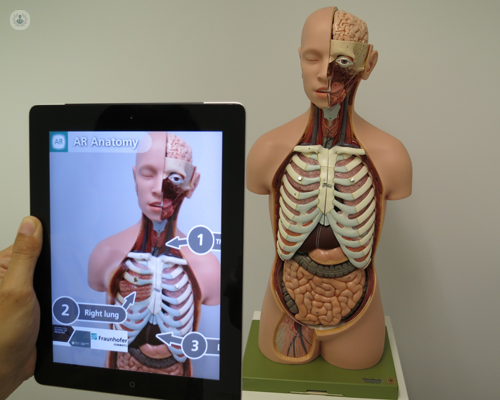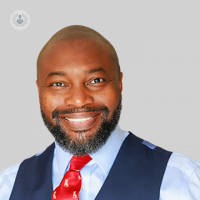Augmented reality in the operating room: is it safer?
Written by:Augmented reality (AR) in medicine is a technology that’s becoming more and more tangible. It’s capabilities mean that it can assist in surgery planning, patient treatment and helps to explain complex medical situations.
However, it may have disadvantages. Professor Kavin Andi, award-winning consultant oral and maxilio surgeon and head and neck surgeon asks: is AR safer?

What does augmented reality-assisted surgery involve?
AR surgery is an experimental technique in which visual information is presented to the surgeon during the surgical procedure. This can be as simple as parameters such as the patient’s heart rate and other physiological parameters, like a head-up display, to complex 3D information of the patients' anatomy which has been reconstructed from imaging in the form of CT, MRI, PET-CT or ultrasound scans.
What are the benefits of using AR?
AR or Vision-Assisted surgery as I prefer to call it, has the ability to present complex anatomical information in a way in which the surgeon is used to seeing in 3D.
Information which cannot be easily appreciated from 2D slices, such as the volume, proximity and spatial length, can assist the surgeon in deciding how much tissue to remove, where to remove it and how to reconstruct it.
AR also has potential benefits for remote operating (international as well intergalactic!) as well as training, education and audit of surgical procedures.
Are there any disadvantages of using AR?
At the moment the technology is in its infancy with limited applications outside research or clinical trials. There are technological challenges related to real-time tracking and registration of the 3D data which are areas of research I am actively involved in.
Which procedures can currently be carried out with AR?
AR lends itself to robotic cancer surgery where, for example, a tumour can be highlighted using fluorescent stains to assist the surgeon with identification of the tumour margins.
Will we see AR becoming more widespread in surgery and when?
It is likely that visual assistance for medical procedures will become more widespread once the technological barriers have been solved over the next ten years with improvements in graphical processing and artificial intelligence.
How might AR change the future of surgery?
We may see greater incorporation of robots augmented with artificial intelligence carrying out ‘routine’ surgical procedures where the surgeon may be at risk.
For example, cardiac catheterization can be carried out safely using robotic techniques without exposing the surgeon to the additional radiation required for real-time imaging during the procedure.
If you’re looking for assistance regarding any queries you may have regarding oral and maxillofacial surgery, or head and neck surgery, visit Professor Andi’s Top Doctors profile here.


